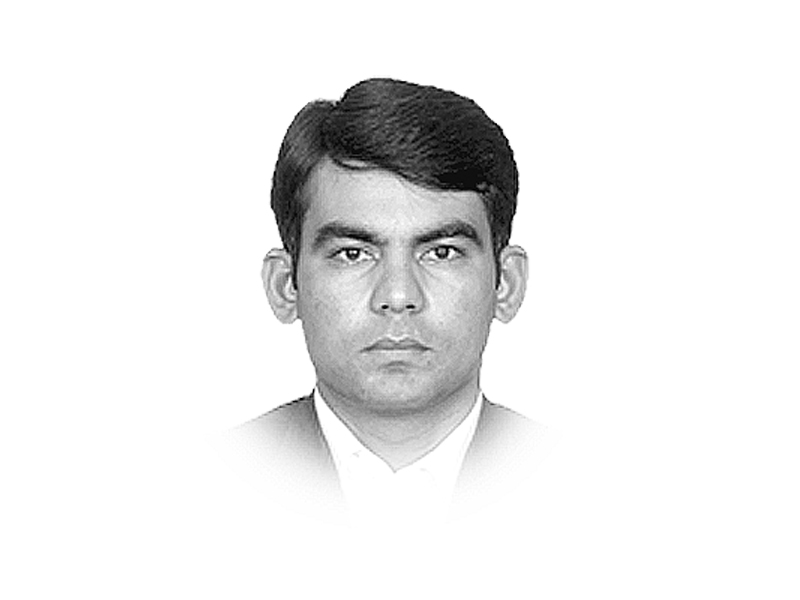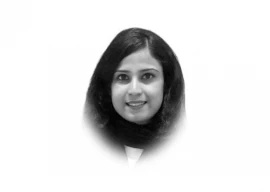
Irrespective of what actually comes in or not, the aid that reaches the country is not even properly spent and most of the money is thus wasted. There are numerous government agencies that are dealing with international donors, with the Economic Affairs Division (EAD) serving as a face of the country, with the main task of dealing with international lending agencies and tracking the money — both loans and grants — once they are sanctioned.
How much we know about aid effectiveness can be determined from the fact that according to a functionary in the EAD, the Aid Effectiveness Unit was dysfunctional and the areas of aid monitoring and its management have long been neglected.
The research also reveals that currently, at least 20 per cent of the aid from the four largest donors for education — Japan, Canada, Germany and France — is spent on scholarships and imputed student costs rather than targeted at the key education priorities of poor countries. For each scholarship provided for a student to study at a university in a developed country, hundreds of students in a developing country could receive basic education. The study quotes: one single scholarship for a Nepalese student in Japan, for example, could pay for 229 secondary school students in Nepal.
The US is one of the leading donors to Pakistan. It has announced $1.5 billion per annum in assistance for the country under the five-year Kerry Lugar package. However, the US does not disburse the committed amount every year and Pakistani authorities do not have a complete record of this assistance.
There is a system called the Development Assistance Database, where the donors report the money they give to Pakistan but local authorities do not have mechanisms to verify the amount reported.
Even the United Nations agencies are giving assistance under two mechanisms; the national implementation mechanism, which comes through government books, and direct implementation mechanisms, where government channels are bypassed.
The UN has announced $1.8 billion aid to Pakistan for the period of 2013-17 under its operation-II programme but no assessment was available for phase I of this provided assistance.
Scholarship aid is largely coming through the Higher Education Commission that spent major chunks of money without proper planning. Roughly Rs10 million per scholarship were spent on students going to study in universities in Europe and the US. Most scholarships are offered in fields that have either been outmoded or in areas where we are decades behind the advanced world. This, in effect, does nothing to help them. Rather, it creates a major drain on the aid lent to Pakistan.
Published in The Express Tribune, April 9th, 2013.
COMMENTS (11)
Comments are moderated and generally will be posted if they are on-topic and not abusive.
For more information, please see our Comments FAQ

1725030039-0/Untitled-design-(2)1725030039-0-165x106.webp)
1725366721-0/kyle-(1)1725366721-0-165x106.webp)
1731410017-0/BeFunky-collage-(45)1731410017-0-165x106.webp)









There is the Pakistan Development Assistance Database, but yes, aid does not appear to be monitored well.
http://www.dadpak.org http://datahub.io/dataset/pakistan-dad
Why have not you mentioned former education minister who cut down the education budget and tried to derail prestigious HEC.
Why don't you write about Former Education minister and his relentless efforts to cut down education budget and to derail HEC.
Mr author lacks vision or either did not succeed to get a scholarship. I agree on the point it costs a lot but terming HE expenditures the reason of the dismal education at lower level is not just. Now to the question why donor countries contribute to HE in Pakistan: there are two reasons: First the credibility of Higher Education Commission around the globe (you should be proud of it). Second, developed countries need researchers to keep their research process moving forward.
I have been an HEC Scholar myself. I agree with some of the points mentioned in the article but unless Govt has a proper scheme for distribution, availing maximum funds form donors and monitoring the funds allocated for higher education, this random chosen fields by the students themselves is the only way of going ahead. HEC is doing a great job and there is a need to inline the allocation of funds with the national goals. I hope we will be having some sort of mechanism in future.
@gp65: "What is being questioned is giving such scholarships by Pakistani state when there is such high level of illiteracy in Pakistan "
Madam, one point has been overlooked/ omitted by you is that the education aid which comes from these donor countries are for higher education (only) mostly in the form of scholarships and Fellowships ( this fact is not clearly mentioned in the opinion by the author.) The discretionary use of such education aid does not lie with the recipient countries..
. "Most scholarships are offered in fields that have either been outmoded or in areas where we are decades behind the advanced world."
Mr author, Schlorships are offered in the fields consented / preferred by the students (not against their wishes)considering their knowledge and aptitude.Why complain? Developing countries are behind decades in education in certain fields. That is why it is all the more important to up date . ( we may not require to compete with them in their countries . More opportunities exists /explored on domestic soil) An attitude of finding fault is simplistic approach..
This is ridiculous. If the country cannot even provide primary and secondary school education for its own children and using foreign govt assistance for the same, it is not getting anywhere. School education unlike PG and doctoral programs require much less monies per head. There is nothing wrong in foreign govt providing scholarships to the needy and deserving candidate for higher education which will be beneficial to the society as a whole. But basic school education is the responsibility of their own govt, in all aspects, finacial, curriculam, provision of premises teachers, and even midday meals.
@Al-Chemisto: "If spending on HE at foreign universities was useless, why are China and India the biggest exporter of students?"
I cannot speak for CHina but Indian government does not pay the fees for these students. Either they get scholarships i US on their own merit or the parents pay for the fees. What is being questioned is giving such scholarships by Pakistani state when there is such high level of illiteracy in Pakistan i.e. whether Pakistan's education budget should be directed for elite tertiary education or underfunded primary education.
Also do not confuse quantity with quality. Just processing more and more people through higher education does not mean that they are actually receiving a quality education. That said, just because you dont go to university that does not make you "mediocre". As mentioned above, India and China have 100,000 of students in HE, but a very small percentage of them are considered to be at par of Western level of student quality.
So according to you spending on PhD and Masters is useless. Ever heard of a value added product? A highly qualified person can cause a chain reaction in society which can uplift the whole society. Producing more mediocre minds will do nothing.
If spending on HE at foreign universities was useless, why are China and India the biggest exporter of students?
How have u come to conclusion that scholarships given are in oud dated uselesee areas? Where is the research to back up ur claim?
Certainly a very misleading piece.